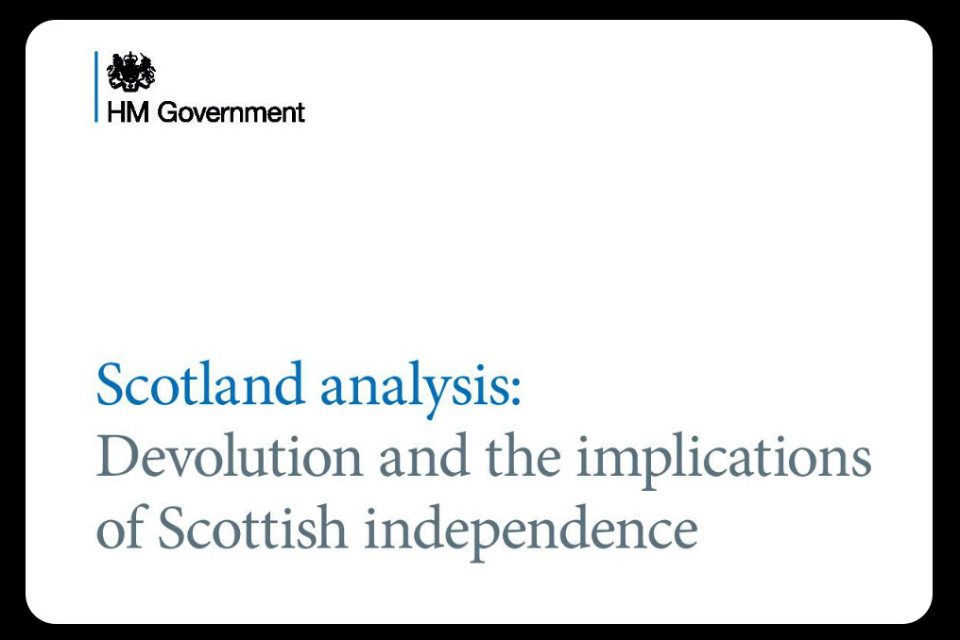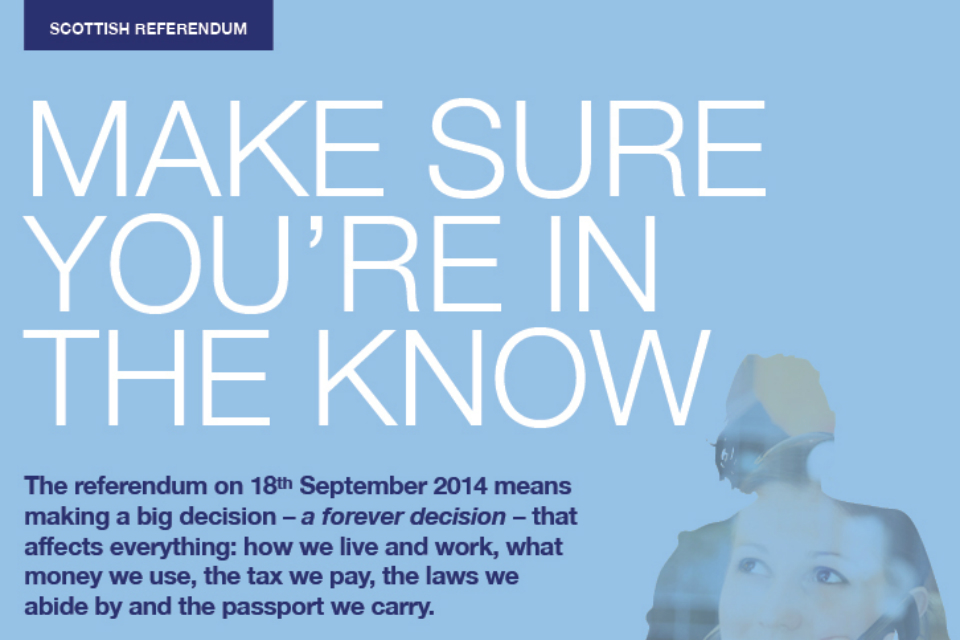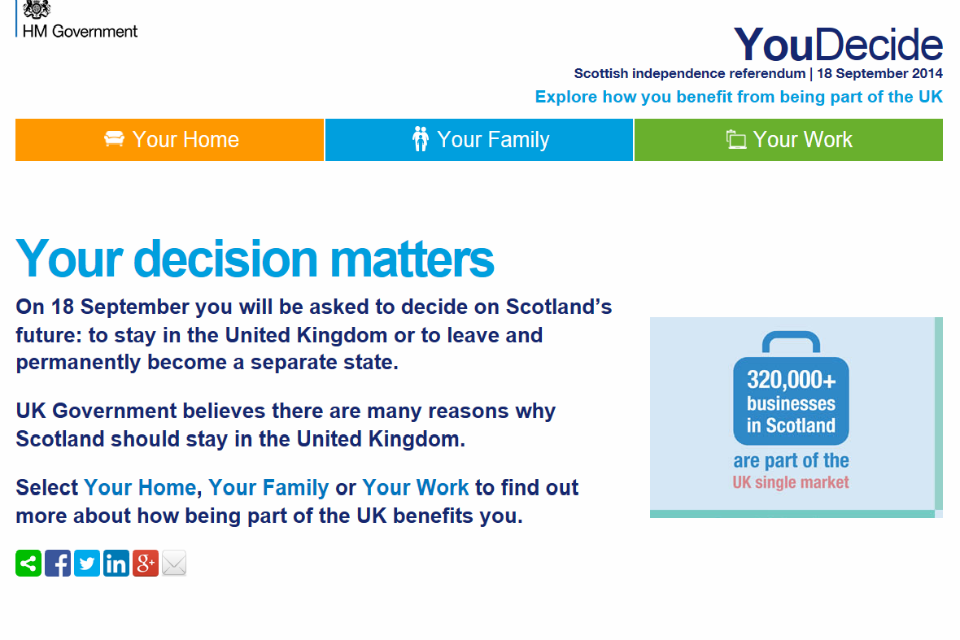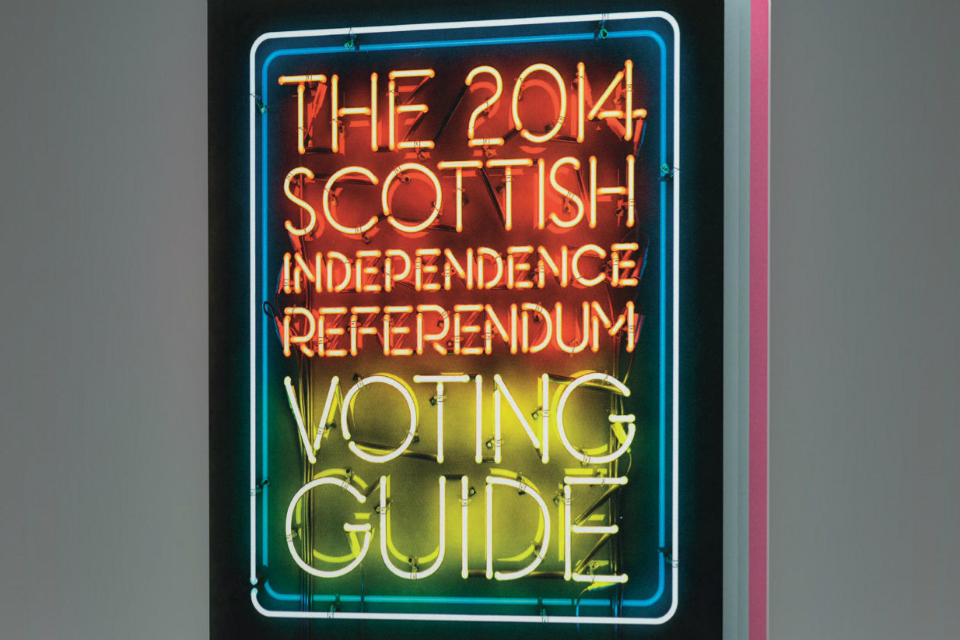Milestones in the Scottish independence referendum process
Published 19 August 2014
May 7, 2011: Scottish National Party win an overall majority in Scottish Parliament elections

The SNP campaign for Scotland to be independent and when they won a majority at the last Scottish Parliament election they began to implement plans for independence.
January 10, 2012: UK Government launches referendum consultation
As constitutional arrangements are the responsibility of the UK Parliament, the UK Government launched a consultation on facilitating a legal, fair and decisive referendum on whether Scotland should leave the United Kingdom. The consultation document on Scotland’s constitutional future sets out options for delivering a legal, fair and decisive referendum.
May 1, 2012: Legislation transfers more powers to the Scottish Parliament
The Scotland Bill received Royal Assent on May 1, 2012 - the 305th anniversary of the Act of Union - bringing about the largest ever transfer of financial powers to Scotland since the creation of the UK.
The key powers include:
Stamp duty land tax and landfill tax
From April 2015, Scottish Government legislation will replace stamp duty land tax and landfill tax in Scotland with the Land and Buildings Transaction Tax and Scottish Landfill Tax. Revenue Scotland will become responsible for the collection of the new taxes.
Extending borrowing powers
From April 2015, current borrowing powers of up to £500 million will be extended and a new Scottish cash reserve will be created to help manage the new tax receipts.
New capital borrowing power
From April 2015, there will be a new £2.2 billion capital borrowing power for the Scottish Parliament, with a limited version of the power in place from April 2013 to allow the Scottish government to fund £100 million of pre-payments for the Forth Road Crossing.
Scottish rate of income tax
A new Scottish rate of income tax will come into force in April 2016. This means the Scottish Parliament will set a new Scottish rate – with no upper or lower limit - which will apply equally to all of the reduced main UK income tax rates.
May 17, 2012: UK Government publishes responses to referendum consultation
The UK Government published the responses to referendum consultation.
October 15, 2012: Edinburgh Agreement signed

Prime Minister David Cameron and First Minister Alex Salmond sign the Edinburgh Agreement.
The power to legislate for the referendum was transferred to the Scottish Parliament following the Referendum Agreement (or Edinburgh Agreement), which was signed by Prime Minister David Cameron and First Minister Alex Salmond on October 15 2012. As a result of this, the Scottish Parliament passed the Scottish Independence Referendum Act 2013 and Scottish Independence Referendum (Franchise) Act 2013 to set out the arrangements for the referendum.
February 12, 2013: First Scotland Analysis paper published

Ahead of the referendum, to inform the debate about Scotland’s constitutional future, the UK government undertook a detailed programme of analysis on Scotland’s place in the UK and how it contributes to and benefits from being part of the UK.
The work was designed to provide people in Scotland with the facts and figures that were either currently unknown or taken for granted, and explain how the UK in its current form works.
A number of government departments and independent experts were involved in this analysis. The first paper looked at devolution and the implications of Scottish independence.
October 7, 2013: Alistair Carmichael appointed as Scottish Secretary
In a ministerial reshuffle on October 7, 2013, Alistair Carmichael - the MP for Orkney and Shetland - was appointed as Scottish Secretary.
February 13, 2014: Chancellor rules out currency union

In a speech in Edinburgh, Chancellor George Osborne announced that a currency union with an independent Scotland was not going to happen. A currency union has now been ruled out by all 3 main UK parties.
He also published an assessment from HM Treasury about what independence would mean for Scotland’s economy which also discussed its choice of currency.
January 20, 2014: First UK Government referendum factsheet published
The first of a series of 5 UK Government referendum factsheets was published in January. The first leaflet looked was an overview of the situation and other subjects which were covered included money and the economy, our place in the world, personal finance and jobs and pensions.

February 7, 2014: Prime Minister sets out positive vision for the future of the UK
Prime Minister David Cameron used a speech to call on the rest of the UK to speak out in favour of the Union and against Scottish independence.
May 15, 2014: Prime Minister says Scotland can have the best of both worlds

David Cameron met members of the armed forces at the 6 Scots headquarters in Glasgow.
Prime Minister David Cameron visited Scotland to continue making the positive arguments in favour of Scotland remaining part of the UK. He said:
My message is simple. We want Scotland to stay. We are all enriched by being together. Scotland puts the great into Great Britain. Together we are a United Kingdom with a united future.
June 19, 2014: Final Scotland Analysis paper published
The final Scotland Analysis paper was published in June, summarising the 14 papers in the series which covered topics as varied as energy, defence, currency and financial services.
June 23, 2014: Distribution of door drop leaflet begins

Distribution of a UK Government leaflet which was sent to all Scottish households began on June 23. The booklet outlined what staying in the UK means for Scotland.
July 18, 2014: Launch of You Decide online tool
The UK Government has launched a You Decide online tool to help people explore how Scottish independence could affect their home, work and family.

August 11, 2014: Electoral Commission campaign launched

On August 11, the Electoral Commission launched a campaign to raise awareness of the referendum and the voting process and to provide impartial information.
September 2, 2014: Deadline for registering to vote
Most people over the age of 16 who live in Scotland will be entitled to vote in the referendum. As with other UK elections, to get a vote you will need to register in advance. The deadline for registering is September 2. Unlike other UK elections, 16 and 17 year olds will be able to vote in the referendum. For more information for young voters see the Electoral Commission’s FAQs for young voters.
September 3, 2014: Deadline for postal/proxy vote
If you want a postal or proxy vote, you have until September 3 to apply for it.
September 18, 2014: Referendum day
The polling stations will be open from 7am to 10pm on September 18. The count will begin immediately after the close of poll and the Chief Counting Officer will announce the result of the referendum which is expected on Friday 19 September.
